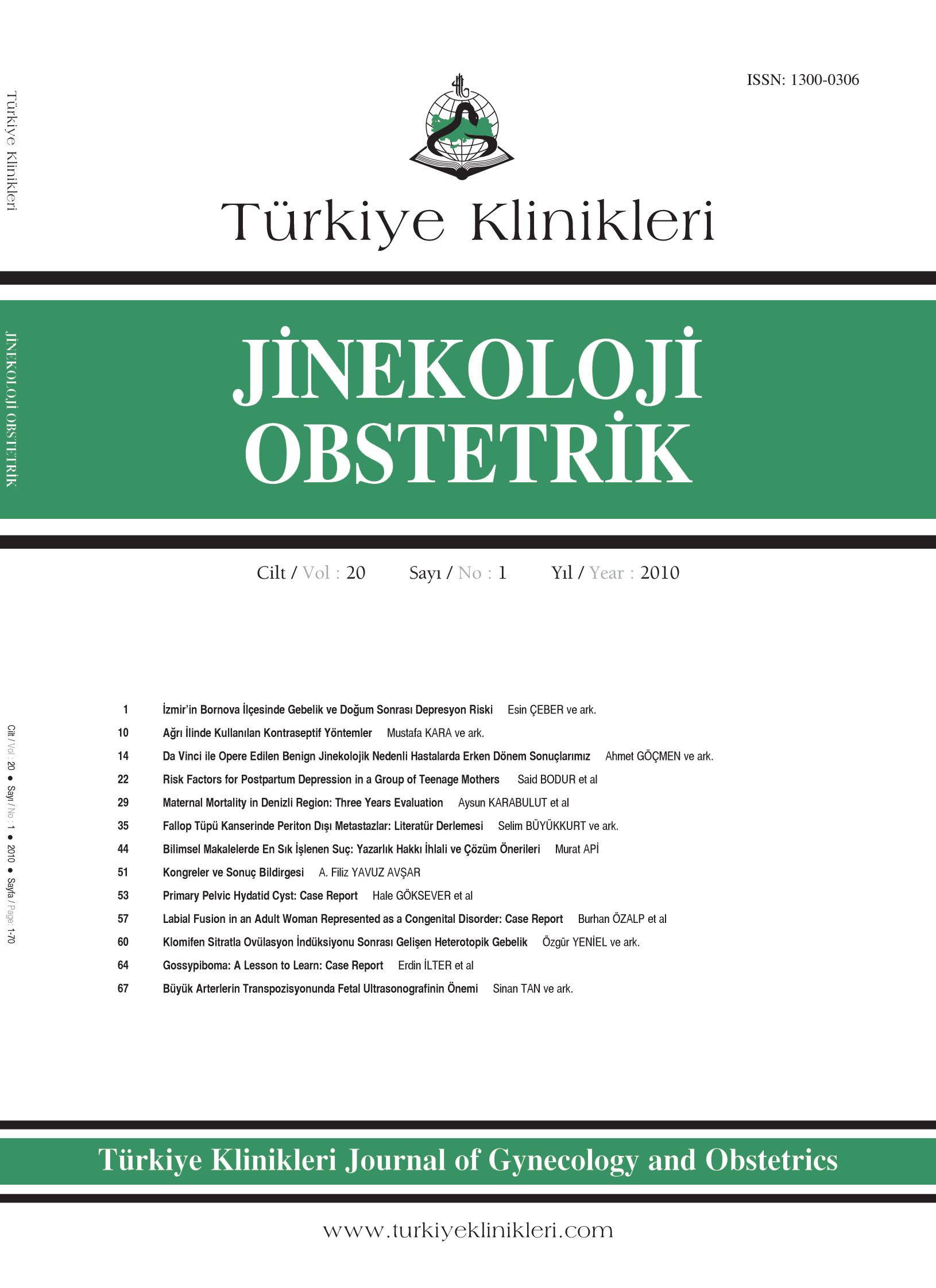Open Access
Peer Reviewed
REVIEW
2304 Viewed2161 Downloaded
The Most Frequently Committed Scientific Misconduct; Violation of Authorship Rights and Suggestions of Solutions: Review
Bilimsel Makalelerde En Sık İşlenen Suç: Yazarlık Hakkı İhlali ve Çözüm Önerileri
Turkiye Klinikleri J Gynecol Obst. 2010;20(1):44-50
Article Language: TR
Copyright Ⓒ 2020 by Türkiye Klinikleri. This is an open access article under the CC BY-NC-ND license (http://creativecommons.org/licenses/by-nc-nd/4.0/)
ÖZET
Bilimsel sahtekârlık, bilinçli olarak başkasının düşünsel haklarını kendisi yapmışçasına ihlal etmek veya diğer kişilerin bilimsel çalışmalarına isteyerek zarar vermek olarak tanımlanmaktadır. Uluslararası tıbbi dergi editörleri komitesi bu çerçevede yol gösterici rehberler oluşturmuştur. Bu rehberler yazarlık hakkına sahip olabilmek için (I) Çalışmanın fikrine ve dizaynına; (II) Veri toplanmasına, analiz edilmesine ve bu analizlerin yorumlanmasına; (III) Makalenin eskiz yazılımına ve düşünsel düzeyde gözden geçirilerek düzeltilmesine; (IV) Yayına hazır hale getirilmesi aşamasında makalenin son halinin onaylanmasına büyük ölçüde katkıda bulunma koşulunu önermektedir. Sayılan dört kriterin tümü makalede yazarlık hakkına sahip olmak için gereklidir. Ayrıca, makalede adı geçen kişi makalenin içeriği ile ilgili tüm sorumluluğu da almaktadır. Yazar olan şahıs, diğer yazarların yardımı olmaksızın çalışmayı, bulguları ve makaledeki tüm ayrıntıları savunabilme yetisine sahip olmalıdır. İsimlerinin yanında özel bir katkı belirtilmediği sürece tüm yazarlar bilimsel makalenin sorumluluğunu beraberce taşırlar. Bu nedenle tüm bilimsel çalışmalarda yazar olma koşulları eksiksiz uygulanmalıdır. Bu çalışmanın amacı, bilimsel makalelerde en sık işlenen suç olan yazarlık hakkı ihlalini gözden geçirmek ve çözüm önerileri sunmaktır.
Bilimsel sahtekârlık, bilinçli olarak başkasının düşünsel haklarını kendisi yapmışçasına ihlal etmek veya diğer kişilerin bilimsel çalışmalarına isteyerek zarar vermek olarak tanımlanmaktadır. Uluslararası tıbbi dergi editörleri komitesi bu çerçevede yol gösterici rehberler oluşturmuştur. Bu rehberler yazarlık hakkına sahip olabilmek için (I) Çalışmanın fikrine ve dizaynına; (II) Veri toplanmasına, analiz edilmesine ve bu analizlerin yorumlanmasına; (III) Makalenin eskiz yazılımına ve düşünsel düzeyde gözden geçirilerek düzeltilmesine; (IV) Yayına hazır hale getirilmesi aşamasında makalenin son halinin onaylanmasına büyük ölçüde katkıda bulunma koşulunu önermektedir. Sayılan dört kriterin tümü makalede yazarlık hakkına sahip olmak için gereklidir. Ayrıca, makalede adı geçen kişi makalenin içeriği ile ilgili tüm sorumluluğu da almaktadır. Yazar olan şahıs, diğer yazarların yardımı olmaksızın çalışmayı, bulguları ve makaledeki tüm ayrıntıları savunabilme yetisine sahip olmalıdır. İsimlerinin yanında özel bir katkı belirtilmediği sürece tüm yazarlar bilimsel makalenin sorumluluğunu beraberce taşırlar. Bu nedenle tüm bilimsel çalışmalarda yazar olma koşulları eksiksiz uygulanmalıdır. Bu çalışmanın amacı, bilimsel makalelerde en sık işlenen suç olan yazarlık hakkı ihlalini gözden geçirmek ve çözüm önerileri sunmaktır.
ABSTRACT
Scientific misconduct is defined as conscious or gross negligent misrepresentation, the infringement of intellectual property rights or the otherwise willful impairment of others' research work. The guidelines formed by the International Committee of Medical Journal Editors constituted one such framework. These guidelines recommend that authorship be awarded to those who make a substantial contribution to (I) conception and design; (II) acquisition of or analysis and interpretation of data; (III) drafting the article or revising it critically for important intellectual content; and (IV) final approval of the version to be published. All four of these conditions must be met to satisfy the authorship criteria. In addition, one should have participated sufficiently in the work to take full responsibility for the content. One should be able to defend, without help from co-authors, the work, the results, and everything else that has been included in the manuscript. All authors carry the responsibility for collective publication if their contributions are not specifically identified by their name. Therefore, authorship eligibility criteria must be applied strictly to all scientific works. The aim of the present article is to review the most frequently committed scientific misconduct; so called violation of authorship rights and to recommend solutions.
Scientific misconduct is defined as conscious or gross negligent misrepresentation, the infringement of intellectual property rights or the otherwise willful impairment of others' research work. The guidelines formed by the International Committee of Medical Journal Editors constituted one such framework. These guidelines recommend that authorship be awarded to those who make a substantial contribution to (I) conception and design; (II) acquisition of or analysis and interpretation of data; (III) drafting the article or revising it critically for important intellectual content; and (IV) final approval of the version to be published. All four of these conditions must be met to satisfy the authorship criteria. In addition, one should have participated sufficiently in the work to take full responsibility for the content. One should be able to defend, without help from co-authors, the work, the results, and everything else that has been included in the manuscript. All authors carry the responsibility for collective publication if their contributions are not specifically identified by their name. Therefore, authorship eligibility criteria must be applied strictly to all scientific works. The aim of the present article is to review the most frequently committed scientific misconduct; so called violation of authorship rights and to recommend solutions.
MENU
POPULAR ARTICLES
MOST DOWNLOADED ARTICLES





This journal is licensed under a Creative Commons Attribution-NonCommercial-NoDerivatives 4.0 International License.











